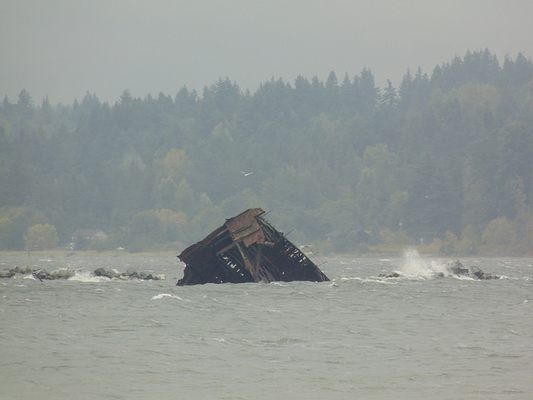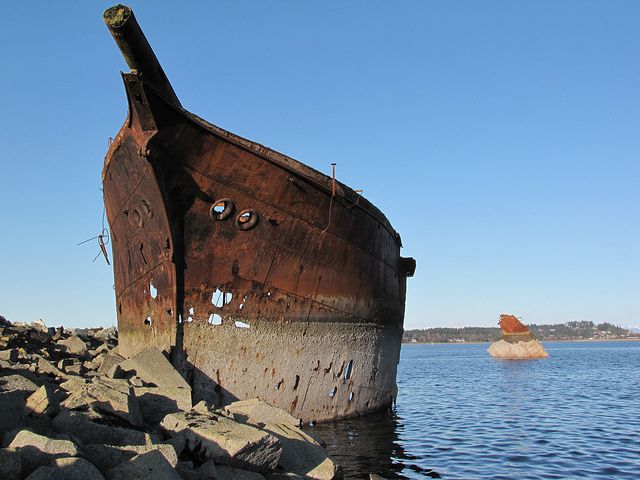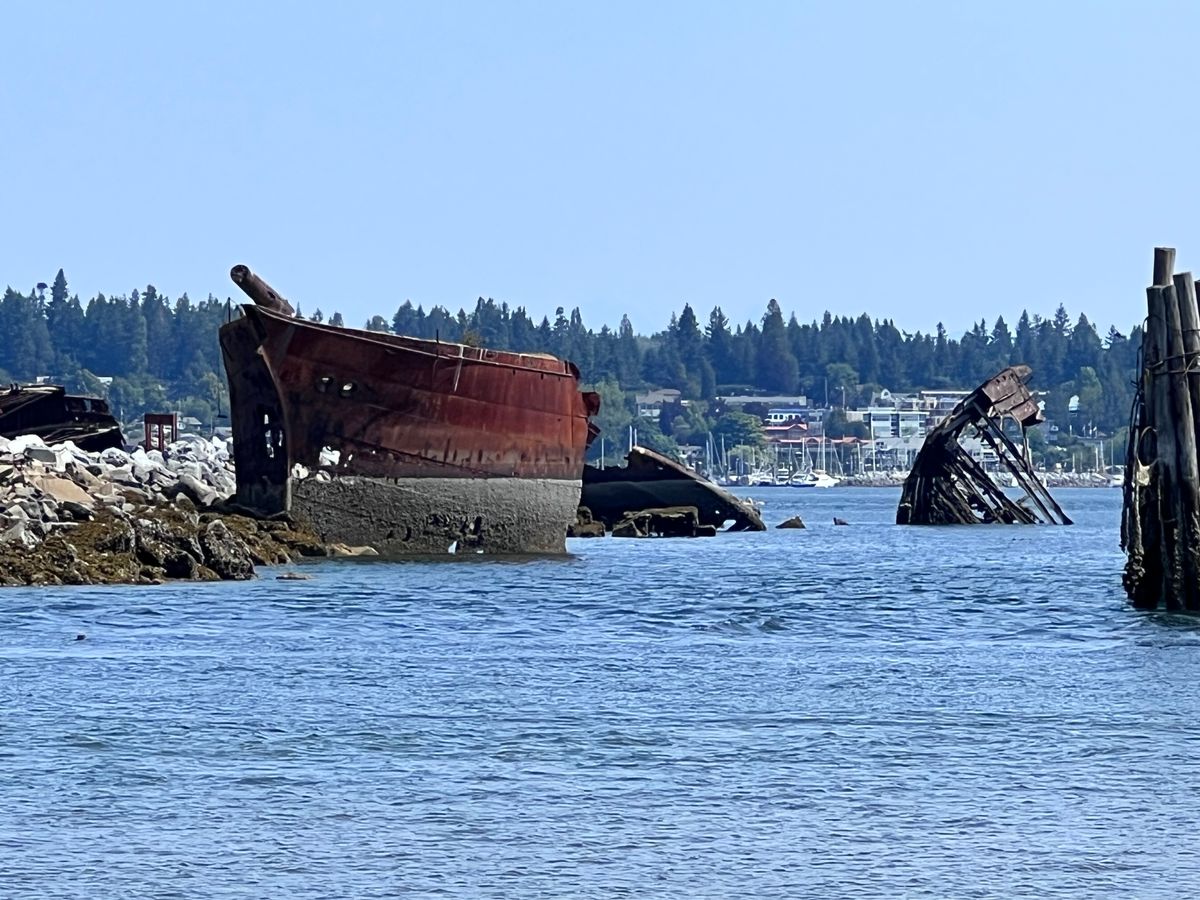About
Rusting away under the roiling waters of Comox Harbour near Vancouver, British Columbia are 14 ships, twice retired.
In the early 20th century the logging industry was booming around Comox Harbour near Vancouver, as it was in many frontier towns of the Pacific Northwest. But a logging boom can quickly go bust if you can’t turn your timber into lumber quickly and cheaply. At the time, getting logs to the mill faced a lot of challenges in British Columbia, including unpredictable weather and rough waters, which took a toll on ships and their crews alike.
The elements could be rough enough on loggers and crewmen, working to tow and ship their logs from the harbor to the mills, that in the late 1930s someone had an idea: what they needed was a breakwater to calm the sometimes treacherous waters of the harbor – but they needed one fast. Decommissioned ships could maybe be the solution – and so was sunk the first of many ships that would act as a foundation for a breakwater, eventually leading to a fleet of ships being deliberately sunk – including some historic ships – and the makeshift breakwater seemed to work.
Over the course of a few decades, ships which no longer served their sea-faring purpose were towed out into Comox Harbour, drilled full of holes, and strategically sunk. In total there were three windjammers, three frigates, two destroyers, three steam tugs, one (maybe two according to some accounts) harpoon boat, and two barques (a kind of “workhorse” of the 19th century sailing ships). They acted to calm the waters churned up by the strong east winds, so logging traffic was better able to navigate to the mills on the mainland.
Today, more than half a century later, the shipwrecks sit, rusting and decaying along the breakwater, eaten away by salt and sea microbes. The hulls that can still be seen, predominantly at low tide, include a couple of important 19th century ships: the Riversdale and the Melanope, both three-masted windjammers. The Riversdale, noted by historians as a fine example of late 19th century English ship building, was constructed in and launched from Liverpool in 1894. She worked hard before retiring as a breakwater, as did the Melanope. She was a generation older than the Riversdale, but also a Liverpudlian. Launched in 1876, the Melanope worked as everything from an immigrant ship to a railway coal barge, hauling cargo to Australia and rice from Asia in between.
Eventually, the mills that the breakwater protected shut down, and according to the Vancouver Sun, the Royston Wrecks have been given some protection under the British Columbia Heritage Conservation Act. Declaring them as registered archaeological sites makes it illegal for scavengers to take any souvenirs from the ships, while at the same time keeping the current state of the wrecks intact to allow for research. But they have to work fast – as with most ships, these wrecks will eventually get swallowed up and eaten by the sea.
Related Tags
Know Before You Go
The breakwater is at the end of Hilton Road (Island Hwy S.), off of Rte 19A in Royston, BC
Published
November 17, 2015































